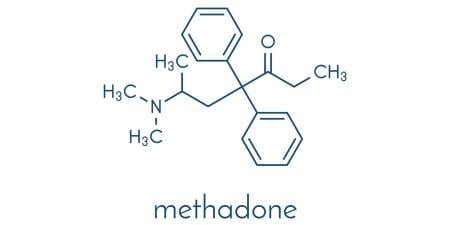Abstract
Correctional health research requires important safeguards to ensure that research participation is ethically conducted. In addition to having disproportionately low educational attainment and low literacy, incarcerated people suffer from health-related conditions that can affect cognition (e.g., traumatic brain injury, substance use disorders, mental illness). Yet modified informed consent processes that assess participants’ comprehension of the risks and benefits of participation are not required by relevant federal guidelines. A push to assess comprehension of informed consent documents is particularly timely given an increase in demand for correctional health research in the context of criminal justice reform. We argue that comprehension assessments can identify persons who should be excluded from research and help those who will ultimately participate in studies better understand the risks and benefits of their participation.
Introduction
With a growing focus on reducing health disparities, researchers and funding organizations, including the National Institutes of Health (NIH) [1], are calling for more research conducted with and on behalf of correctional populations [2-6]. Criminal justice reform is integrally connected to health given the disproportionately high rates of mental illness, substance use disorders, chronic illnesses (e.g., diabetes), and infection disease (e.g., hepatitis C) found in correctional populations [7-10]. In consequence, demand for clinical and behavioral health research with incarcerated populations will likely continue to grow in an effort to better connect incarcerated persons with appropriate and effective care and thus reduce their risk of repeat incarceration. For example, successful evidence-based responses by correctional health systems to the nation’s increasingly dire opioid epidemic portend a growing need for correctional health research. Yet correctional settings are coercive and controlled environments where freedom is—by definition—constrained. It is thus critical that incarcerated persons’ decision making about participation in research is thoroughly evaluated to ensure that it is voluntary (i.e., uncoerced) and adequately informed (i.e., understood). This article proposes an intervention to assess and improve participant comprehension of the risks and benefits of research conducted in a correctional setting. To motivate this proposal, we first discuss guidelines for research with incarcerated people and describe common vulnerabilities experienced by this population that we argue warrant the use of comprehension assessment tools to supplement the informed consent process. We then discuss the use of such tools in other vulnerable populations that participate in research and, finally, report previously unpublished data describing the use of one such tool, “teach-to-goal,” in a recent study of incarcerated older adults.
The Need for More (Ethical) Research with Incarcerated Populations
Since the Nuremberg Code of 1947, general ethical principles governing human subjects research have required that experiments be necessary, that they be conducted by qualified personnel, and that all research participants give their informed consent prior to enrollment [11]. However, in response to ongoing disturbing and exploitative medical testing in US prisons, the 1979 Belmont Report called for enhanced protections when incarcerated populations engage in clinical research [12-14]. Accordingly, the US Department of Health and Human Services (HHS) Office for Human Research Protections classifies “prisoners” as a special population requiring “additional safeguards” and requires that studies present “no more than minimal risk” [15]. These guidelines also require that studies aim to improve “health or well-being” of “prisoners” as a class and are overseen by institutional review boards (IRBs) with no connection to prisons and with at least one member who is a “prisoner, or a prisoner representative” [15]. Yet beyond the scope of permitted research, HHS guidelines offer little specific guidance to researchers engaging in clinical research with incarcerated populations. Some have questioned whether ethical research with incarcerated persons is possible because the prison environment is inherently coercive and may inexorably undermine participant autonomy[16]. However, the current consensus among researchers supports the fundamental right of vulnerable and historically overlooked populations, including the incarcerated, to participate in research designed to improve their health [17-19].
Despite this ethical imperative, research with incarcerated participants remains limited [2, 3]. Some have speculated that uncertainty surrounding how to design research that meets the particular ethical standards and recommended guidelines for incarcerated research participants—guidelines that do not prescribe specific research practices—is an important reason why research with incarcerated participants remains scarce relative to research with other vulnerable populations [17, 20]. Indeed, a sizeable proportion of the research that is conducted in correctional facilities does not directly enroll incarcerated people. One review of 374 articles published over a five-year period found that 21 percent were based on administrative records [21]. The dearth of such research greatly limits our understanding of the health concerns of patients in correctional settings and our ability to develop evidence-based health interventions to meet the unique needs of this population.
Comprehension of Informed Consent among Incarcerated People: An Overlooked Vulnerability
To clarify and centralize the key principles for achieving ethical research with incarcerated people, the Institute of Medicine (IOM) included an “Updated Ethical Framework” in its 2006 landmark publication, Ethical Considerations for Research Involving Prisoners [21]. A general guide that can be used by researchers and institutional review boards engaged in research with this population, the IOM’s ethical framework affirms the ethical importance of ensuring access to research participation for incarcerated persons [21]. In calling for improved access to research for incarcerated persons, the report also emphasizes the responsibility that researchers bear to ensure the right of such persons to engage in autonomous decision making is respected and acknowledges that fulfilling this responsibility may require protective measures that are tailored to the needs of particular incarcerated subpopulations or institutions. These measures include taking appropriate steps to ensure that research participation is not just voluntary, or free from coercion, but also well understood by diverse research cohorts across a range of research settings [21].
Yet, as the authors of the IOM report and others have noted, prior work on the ethics of clinical research with incarcerated populations has disproportionality focused on developing informed consent forms that emphasize protection from coercion and undue influence [21, 22]. This work has resulted in typically long forms that emphasize the independence of research from clinical care or correctional outcome and that clearly explain the extent and limits of the benefits of participation [21]. Conversely, strategies to ensure that consent is adequately informed (i.e., understood) are relatively limited (e.g., lowering the grade level at which forms are written) and warrant additional scrutiny.
The IOM report suggests that tests for comprehension can be appropriate for incarcerated people with poor reading skills [21]. However, incarcerated populations commonly suffer numerous social and health-related vulnerabilities with potentially limiting effects on comprehension, some of which may not be reflected in reading skills. These include low educational attainment and literacy [23, 24], high rates of mental illness and learning disabilities, and health-risk factors related to temporarily or permanently impaired cognition (e.g., substance use, traumatic brain injury) [25-27]. Among older incarcerated persons, age-related conditions such as sensory impairments (e.g., hearing, vision) and cognitive impairments (including dementia) are disproportionately common and are present at relatively young ages [28-30]. In addition, aspects of incarceration itself have been shown to lead to impairments that can affect comprehension, as in the case of prolonged solitary confinement [31].
Impairments associated with aging are especially important because over the past two decades the number of adults aged 55 and older who were incarcerated has increased at almost 7 times the rate of the overall US prison population [32]; adults aged 55 and older now constitute nearly 10.6 percent of the US prison population [33]. As the correctional population ages, enhanced consent procedures are almost certainly needed because medical conditions affecting cognition, such as early dementia, could easily escape researchers’ notice in the context of a carefully scripted and linear conversation, and sensory impairments (such as difficulty with vision or hearing) could have an impact on a research participant’s comprehension during the consenting process [34]. Given these common vulnerabilities among older adults who are incarcerated as well as demographic trends that suggest these vulnerabilities will likely increase, adapted consent processes that address increased risk for poor comprehension should be the norm in correctional research methodology.
Teach-to-Goal Consent: A Case Example
Among diverse vulnerable community-based populations (e.g., the old, the mentally ill), modifications to informed consent forms, including lowering the reading level of forms, have been shown to enhance participant comprehension [35-38]. Additional protocols have also been developed and tested in an effort to assess or improve participant comprehension. For example, extended discussion interventions create opportunities for participants to ask questions and gain knowledge about the research being considered. Extended discussion approaches include semistructured interviews with study staff and an additional meeting with a third-party expert, among others [39-41]. Multimedia interventions have also been deployed in an effort to better understand and address participant comprehension, including interactive computer programs that replace informed consent forms and follow-up informational videos [42, 43]. According to two systematic reviews of interventions to improve comprehension in informed consent for research, multimedia interventions lack evidence of effectiveness while extended discussions and a third, less resource-intensive type of protocol—test/feedback interventions—have been shown to be effective [44, 45]. One such test/feedback intervention, an iterative process called teach-to-goal, is often used to assess and address consent comprehension in vulnerable populations with limited literacy [46-48].
In teach-to-goal, potential participants are read a consent form and asked to describe the research procedures or to answer questions about the study. Misperceptions are corrected and the participant’s comprehension is assessed again. Those who cannot demonstrate comprehension after several attempts are excluded from the study. Some have argued that this process represents a higher ethical standard of consent [49], and teach-to-goal is promoted by the National Quality Forum and the Agency for Healthcare Quality and Research when research is conducted with populations at disproportionate risk for comprehension-relevant vulnerabilities, such as low literacy [50, 51]. The teach-to-goal process is described here because it can be easily incorporated into existing research protocols in the correctional environment, although researchers may make a different choice from the variety of additional protocols discussed above [52].
Three of the authors (CA, MB, and BW) were co-investigators on an epidemiologic study that used teach-to-goal in the informed consent process with 129 initial enrollees—older adults in jail who had an average age of 59 years [53]. The teach-to-goal tool comprised nine questions that assessed comprehension of the study’s purpose, eligibility criteria, study procedures, the risks associated with participation, and participants’ rights. As a result of this enhanced consenting procedure, the investigators excluded 3.1 percent of potential participants who could not answer all questions correctly, even after three tries, but who were otherwise prepared to sign a consent form written at a fifth-grade level that had been read to them aloud, without a time limit, by staff trained and experienced in research with incarcerated people. The exclusion of four participants did not adversely affect the representativeness of our sample with respect to age, although it might have resulted in the underrepresentation of relevant health conditions such as dementia. For studies in which a substantial proportion of participants cannot demonstrate comprehension of the study risks, researchers should consider alternative study designs, such as the use of legally appointed surrogates to give informed consent, to achieve a representative sample.
Perhaps of more notable consequence, the investigators also found that even among those who successfully demonstrated comprehension, fewer than half answered all nine questions correctly on their first attempt (see table 1). This finding suggests that comprehension tests and retests are critical to solidifying important knowledge of the risks and benefits of research participation for those who will ultimately participate. In such cases, the absence of protocols to ensure comprehension would call into question whether participants are truly experiencing “choiceworthy options” [54], effectively undermining the principle of justice that animates the IOM’s “Updated Ethical Framework” for research with incarcerated people [21].
| Attempts needed to correctly answer all questions | % (No.) |
|---|---|
| One | 45.74 (59) |
| Two | 44.19 (57) |
| Three | 6.98 (9) |
| Could not complete | 3.10 (4) |
Source: Previously unpublished data.
Note: Average age of participants was 59; 125 participants ultimately took part in the study [53].
Conclusion
Clinical research with participants in correctional settings requires important additional safeguards to ensure that research participation is ethical. A teach-to-goal process to assess participant comprehension of the risks and benefits of research participation can help ensure that research participation among incarcerated persons is both voluntary and truly informed. As prior studies have shown, the addition to the informed consent process of test/feedback interventions like teach-to-goal or of extended discussion interventions has measurably benefited vulnerable populations including the mentally ill, those at risk for HIV, older adults, and patients with cancer [47, 55, 56]. Added measures to ensure that research meets the highest ethical standards is perhaps most appropriate for studies with incarcerated persons, who often represent a cross-section of vulnerable populations and are commonly exposed while incarcerated to experiences, such as prolonged solitary confinement, that increase relevant vulnerabilities. Yet such measures are not required by current HHS federal guidelines for research with incarcerated persons.
Given the many vulnerabilities common among the incarcerated, as well as the consensus view that fair access to research is an ethical imperative, researchers have an ethical responsibility to take additional protective measures as needed when enrolling incarcerated persons in research. Previously unpublished data from an epidemiologic study of older jail inmates reported here suggest that a teach-to-goal approach to assessing comprehension can screen out some willing participants who lack the ability to comprehend the risks and benefits of participation and can identify others without adequate comprehension at the outset for the purpose of reviewing areas of misunderstanding and solidifying that knowledge in advance of participation. Future research could investigate the factors that contribute most to poor comprehension among potential research participants. However, given the disproportionately high prevalence of medical and social vulnerabilities among incarcerated persons in general, additional safeguards to ensure comprehension, such as teach-to-goal and others, should be considered when conducting research in any correctional setting.
References
- Beadle MR, Graham GN. Collective action to end health disparities. Am J Public Health. 2011;101(suppl):S16-S18.
- Ahalt C, Binswanger IA, Steinman M, Tulsky J, Williams BA. Confined to ignorance: the absence of prisoner information from nationally representative health data sets. J Gen Intern Med. 2012;27(2):160-166.
- Ahalt C, Bolano M, Wang EA, Williams B. The state of research funding from the National Institutes of Health for criminal justice health research. Ann Intern Med. 2015;162(5):345-352.
- Wang EA, Wildeman C. Studying health disparities by including incarcerated and formerly incarcerated individuals. JAMA. 2011;305(16):1708-1709.
- Rich JD, Wakeman SE, Dickman SL. Medicine and the epidemic of incarceration in the United States. N Engl J Med. 2011;364(22):2081-2083.
- Ferguson WJ, Cloud D, Spaulding AC, et al. A call to action: a blueprint for academic health sciences in the era of mass incarceration. J Health Care Poor Underserved. 2016;27(2A):5-17.
- Fazel S, Baillargeon J. The health of prisoners. Lancet. 2011;377(9769):956-965.
- Freudenberg N. Jails, prisons, and the health of urban populations: a review of the impact of the correctional system on community health. J Urban Health. 2001;78(2):214-235.
-
Greifinger R, ed. Public Health Behind Bars: From Prisons to Communities. New York, NY: Springer-Verlag; 2007.
- Dumont DM, Allen SA, Brockmann BW, Alexander NE, Rich JD. Incarceration, community health, and racial disparities. J Health Care Poor Underserved. 2013;24(1):78-78.
- Shuster E. Fifty years later: the significance of the Nuremberg Code. N Engl J Med. 1997;337(20):1436-1440.
-
National Commission for the Protection of Human Subjects of Biomedical and Behavioral Resesarch. The Belmont Report: ethical principles and guidelines for the protection of human subjects of research. http://www.hhs.gov/ohrp/regulations-and-policy/belmont-report/. Published April 18, 1979. Accessed July 24, 2017.
- Hornblum AM. They were cheap and available: prisoners as research subjects in twentieth century America. BMJ. 1997;315(7120):1437-1441.
- Gostin LO. Biomedical research involving prisoners: ethical values and legal regulation. JAMA. 2007;297(7):737-740.
-
Additional protections pertaining to biomedical and behavioral research involving prisoners as subjects, 45 CFR 46 (2009). https://www.hhs.gov/ohrp/regulations-and-policy/regulations/45-cfr-46/index.html#subpartc. Accessed August 3, 2017.
- Wener R. Not situated to exercise free power of choice: human subject research in prison settings. Temple J Sci Technol Environ Law. 2007;26(2):365-385.
- Charles A, Rid A, Davies H, Draper H. Prisoners as research participants: current practice and attitudes in the UK. J Med Ethics. 2016;42(4):246-252.
- Siegal HA, Carlson RG, Falck R, Reece RD, Perlin T. Conducting HIV outreach and research among incarcerated drug abusers: a case study of ethical concerns and dilemmas. J Subst Abuse Treat. 1993;10(1):71-75.
-
Thomas SB, Quinn SC, Butler J, Fryer CS, Garza MA. Toward a fourth generation of disparities research to achieve health equity. Annu Rev Public Health. 2011;32:399-416.
- Park SS, Grayson MH. Clinical research: protection of the “vulnerable”?. J Allergy Clin Immunol. 2008;121(5):1103-1107.
-
Gostin LO, Vanchieri C, Pope A, eds; Institute of Medicine. Ethical Considerations for Research Involving Prisoners. Washington, DC: National Academies Press; 2007.
- Christopher PP, Garcia-Sampson LG, Stein M, Johnson J, Rich J, Lidz C. Enrolling in clinical research while incarcerated: what influences participants’ decisions?. Hastings Cent Rep. 2017;47(2):21-29.
-
Haigler KO, Harlow C, O’Connor P, Campbell A. Literacy Behind Prison Walls: Profiles of the Prison Population from the National Adult Literacy Survey. Washington, DC: National Center for Educational Statistics; 1994.
-
Kirsch IS, Jungeblut A, Jenkins L, Kolstad A. Adult Literacy in America: A First Look at the Findings of the National Adult Literacy Survey. Washington, DC: US Department of Education Office of Educational Research and Development; 1993.
- Moser DJ, Arndt S, Kanz JE, et al. Coercion and informed consent in research involving prisoners. Compr Psychiatry. 2004;45(1):1-9.
- Binswanger IA, Krueger PM, Steiner JF. Prevalence of chronic medical conditions among jail and prison inmates in the USA compared with the general population. J Epidemiol Community Health. 2009;63(11):912-919.
- Binswanger IA, Redmond N, Steiner JF, Hicks LS. Health disparities and the criminal justice system: an agenda for further research and action. J Urban Health. 2012;89(1):98-107.
- Maschi T, Kwak J, Ko E, Morrissey MB. Forget me not: dementia in prison. Gerontologist. 2012;52(4):441-451.
- Williams BA, McGuire J, Lindsay RG, et al. Coming home: health status and homelessness risk of older pre-release prisoners. J Gen Intern Med. 2010;25(10):1038-1044.
-
Fazel S, Hope T, O’Donnell I, Jacoby R. Hidden psychiatric morbidity in elderly prisoners. Br J Psychiatry. 2001;179:535-539.
- Haney C. Mental health issues in long-term solitary and “supermax” confinement. Crime Delinq. 2003;49(1):124-156.
-
Human Rights Watch. Old behind bars: the aging prison population in the United States. https://www.hrw.org/report/2012/01/27/old-behind-bars/aging-prison-population-united-states. Published January 27, 2012. Accessed August 3, 2017.
-
Carson EA, Anderson E. Prisoners in 2015. US Department of Justice Office of Justice Programs Bureau of Justice Statistics; December 2016. https://www.bjs.gov/content/pub/pdf/p15.pdf. Accessed July 25, 2017.
- Moye J, Karel MJ, Azar AR, Gurrera RJ. Capacity to consent to treatment: empirical comparison of three instruments in older adults with and without dementia. Gerontologist. 2004;44(2):166-175.
- Sugarman J, McCrory DC, Hubal RC. Getting meaningful informed consent from older adults: a structured literature review of empirical research. J Am Geriatr Soc. 1998;46(4):517-524.
- Stanley B, Guido J, Stanley M, Shortell D. The elderly patient and informed consent: empirical findings. JAMA. 1984;252(10):1302-1306.
- Rikkert MG, van den Bercken JH, ten Have HA, Hoefnagels WH. Experienced consent in geriatrics research: a new method to optimize the capacity to consent in frail elderly subjects. J Med Ethics. 1997;23(5):271-276.
- Moser DJ, Reese RL, Hey CT, et al. Using a brief intervention to improve decisional capacity in schizophrenia research. Schizophr Bull. 2006;32(1):116-120.
- Aaronson NK, Visser-Pol E, Leenhouts GH, et al. Telephone-based nursing intervention improves the effectiveness of the informed consent process in cancer clinical trials. J Clin Oncol. 1996;14(3):984-996.
-
Kucia AM, Horowitz JD. Is informed consent to clinical trials an “upside selective” process in acute coronary syndromes? Am Heart J. 2000;140(1):94-97.
- Fitzgerald DW, Marotte C, Verdier RI, Johnson WD Jr, Pape JW. Comprehension during informed consent in a less-developed country. Lancet. 2002;360(9342):1301-1302.
- Benson PR, Roth LH, Appelbaum PS, Lidz CW, Winslade WJ. Information disclosure, subject understanding, and informed consent in psychiatric research. Law Hum Behav. 1988;12(4):455-475.
- Agre P, Rapkin B. Improving informed consent: a comparison of four consent tools. IRB. 2003;25(6):1-7.
- Flory J, Emanuel E. Interventions to improve research participants’ understanding in informed consent for research: a systematic review. JAMA. 2004;292(13):1593-1601.
- Tamariz L, Palacio A, Robert M, Marcus EN. Improving the informed consent process for research subjects with low literacy: a systematic review. J Gen Intern Med. 2013;28(1):121-126.
- Kripalani S, Bengtzen R, Henderson LE, Jacobson TA. Clinical research in low-literacy populations: using teach-back to assess comprehension of informed consent and privacy information. IRB. 2008;30(2):13-19.
- Sudore RL, Landefeld CS, Williams BA, Barnes DE, Lindquist K, Schillinger D. Use of a modified informed consent process among vulnerable patients: a descriptive study. J Gen Intern Med. 2006;21(8):867-873.
- Stiles PG, Poythress NG, Hall A, Falkenbach D, Williams R. Improving understanding of research consent disclosures among persons with mental illness. Psychiatr Serv. 2001;52(6):780-785.
-
Wendler D. Can we ensure that all research subjects give valid consent? Arch Intern Med. 2004;164(20):2201-2204.
-
Shojania KG, Duncan BW, McDonald KM, et al., eds. Making Health Care Safer: A Critical Analysis of Patient Safety Practices. Rockville, MD: Agency for Healthcare Research and Quality; 2001. Evidence Report/Technology Assessment 43. https://archive.ahrq.gov/clinic/ptsafety/pdf/ptsafety.pdf. Accessed July 12, 2017.
-
Wu HW, Nishimi RY, Page-Lopez CM, Kizer KW. Improving patient safety through informed consent for patients with limited health literacy. Washington, DC: National Quality Forum; 2005. http://www.qualityforum.org/WorkArea/linkit.aspx?LinkIdentifier=id&ItemID=22090. Accessed July 12, 2017.
- Schenker Y, Fernandez A, Sudore R, Schillinger D. Interventions to improve patient comprehension in informed consent for medical and surgical procedures: a systematic review. Med Decis Making. 2011;31(1):151-173.
- Bolano M, Ahalt C, Ritchie C, Stijacic-Cenzer I, Williams B. Detained and distressed: persistent distressing symptoms in a population of older jail inmates. J Am Geriatr Soc. 2016;64(11):2349-2355.
-
Powers M. Theories of justice in the context of research. In: Kahn JP, Mastroianni AC, Sugarman J, eds. New York, NY: Oxford University Press; 1998:150.
- Wirshing DA, Wirshing WC, Marder SR, Liberman RP, Mintz J. Informed consent: assessment of comprehension. Am J Psychiatry. 1998;155(11):1508-1511.
-
Coletti AS, Heagerty P, Sheon AR, et al; HIV Network for Prevention Trials Vaccine Preparedness Study. Randomized, controlled evaluation of a prototype informed consent process for HIV vaccine efficacy trials. J Acquir Immune Defic Syndr. 2003;32(2):161-169.



